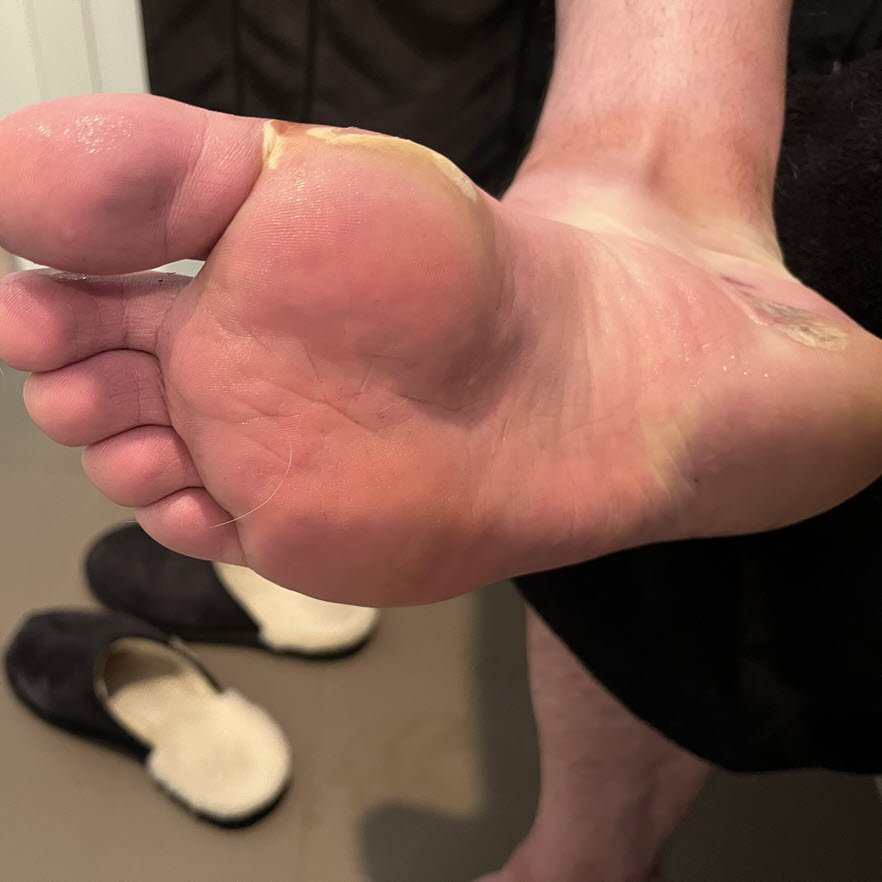Top Dermatology Treatments for Hyperhydrosis of Hands and Feet: What You Need to Know
Top Dermatology Treatments for Hyperhydrosis of Hands and Feet: What You Need to Know
Blog Article
Introducing the Intricacies of Excessive Sweating: A Comprehensive Overview to Diagnosis and Monitoring
Too much sweating, clinically known as hyperhidrosis, is a condition that impacts a significant number of individuals and can have a profound influence on their high quality of life. While sweating is an all-natural bodily feature, its overactivity in hyperhidrosis offers an unique set of difficulties that commonly go past mere pain.

Understanding Hyperhidrosis Causes
Hyperhidrosis causes can be credited to numerous aspects such as genes, hormonal inequalities, and particular medical conditions. Genes play a considerable role in main focal hyperhidrosis, where people inherit the problem from their member of the family. This type of hyperhidrosis typically materializes in details locations like the palms, soles of the feet, underarms, and face. Hormonal imbalances, specifically an over active thyroid gland or menopausal adjustments, can likewise activate excessive sweating. Additionally, particular clinical conditions such as diabetes mellitus, heart condition, and infections can cause secondary generalized hyperhidrosis. These underlying health and wellness issues can interrupt the body's all-natural air conditioning system, creating the sweat glands to become over active. Comprehending the origin creates of hyperhidrosis is crucial in detecting and efficiently handling this condition. By recognizing the specific factors contributing to excessive sweating, doctor can customize treatment strategies to resolve the underlying cause, using relief and improving the lifestyle for people influenced by hyperhidrosis.
Acknowledging Hyperhidrosis Symptoms

Furthermore, hyperhidrosis signs might show up in social and emotional distress, as individuals may feel embarrassed or distressed about their sweating, bring about avoidance of social circumstances (Exessive Sweating). Additionally, repeated episodes of extreme sweating can cause skin maceration, fungal infections, and a general decrease in self-confidence
Diagnostic Process for Hyperhidrosis
Launching the analysis procedure for excessive sweating includes thorough assessment of the person's clinical background and physical examination. Asking regarding the beginning, duration, and triggers of sweating episodes is vital to distinguish in between main focal hyperhidrosis and additional generalized hyperhidrosis. Medical history should likewise include inquiries about drugs, medical problems, and family background of hyperhidrosis.
Throughout the checkup, particular attention is paid to the locations impacted by sweating. The doctor may evaluate the degree of sweating, check for signs of underlying conditions, and evaluate the effect of sweating on the individual's top quality of life. Additionally, certain examinations like the gravimetric test, starch-iodine test, or skin conductance dimensions may be performed to evaluate the amount of sweat created.
Additionally, in cases where additional hyperhidrosis is thought, additional examinations such as blood examinations, pee tests, and imaging research studies may be recommended to recognize the underlying root cause of extreme sweating. The analysis process aims to precisely identify the kind and reason for hyperhidrosis to assist ideal administration strategies.
Therapy Alternatives for Hyperhidrosis
When dealing with extreme sweating, various treatment choices are available to alleviate signs and symptoms and boost the person's lifestyle. The treatment strategy for hyperhidrosis relies on the severity of signs and the client's action to first therapies.
Topical therapies, such as aluminum-based antiperspirants, are commonly advised as the initial line of defense for taking care of moderate cases of hyperhidrosis. For individuals with extra serious symptoms, dental medications like anticholinergics may be suggested to assist reduce sweating.

Effective Monitoring Techniques
To effectively manage hyperhidrosis, a extensive and customized treatment plan tailored to the individual's specific requirements and reaction to previous therapies is crucial. This plan may integrate a combination of restorative techniques, including way of living modifications, topical treatments, oral medications, botulinum toxin shots, iontophoresis, and in extreme cases, medical interventions like sweat gland elimination or sympathectomy. Lifestyle adjustments such as wearing moisture-wicking garments, utilizing antiperspirants, and exercising stress-reducing methods can complement medical treatments. Topical antiperspirants consisting of aluminum chloride are frequently the first-line treatment, with more powerful formulas readily available for immune instances. Oral medications like anticholinergics may be suggested for generalised hyperhidrosis. visit this web-site Botulinum toxic substance injections work for focal hyperhidrosis, providing short-term alleviation by blocking the launch of acetylcholine. Iontophoresis, involving the use of a reduced electrical current to lower gland activity, can be helpful for both palmoplantar and axillary hyperhidrosis. Surgical alternatives are generally scheduled for serious, refractory instances and call for mindful webpage consideration of advantages and dangers. A multidisciplinary method entailing skin doctors, medical care physicians, and, if necessary, doctors, can optimize the administration of hyperhidrosis.
Verdict
Finally, hyperhidrosis is a problem identified by extreme sweating, which can greatly impact a person's quality of life. By understanding the reasons, acknowledging the signs and symptoms, and undertaking the analysis procedure, doctor can successfully handle this problem. Treatment choices include topical drugs, dental drugs, injections, and also surgeries in severe instances. With proper diagnosis and administration techniques, people struggling with hyperhidrosis can find relief and enhance their general health.
Too much sweating, clinically known as hyperhidrosis, is a condition that affects a significant number of individuals and can have an extensive influence on their high quality of life. By identifying the certain aspects adding to extreme sweating, health care carriers can tailor treatment strategies to resolve the underlying cause, providing alleviation and enhancing the quality of life for individuals impacted by hyperhidrosis.
Hyperhidrosis, identified by extreme sweating beyond what is necessary for managing body temperature level, can significantly impact an individual's high quality of life. Inquiring about the onset, period, and causes of sweating episodes is essential to differentiate in between primary focal hyperhidrosis and second generalized hyperhidrosis. Exessive Sweating.In Learn More Here conclusion, hyperhidrosis is a problem defined by excessive sweating, which can considerably impact an individual's quality of life
Report this page